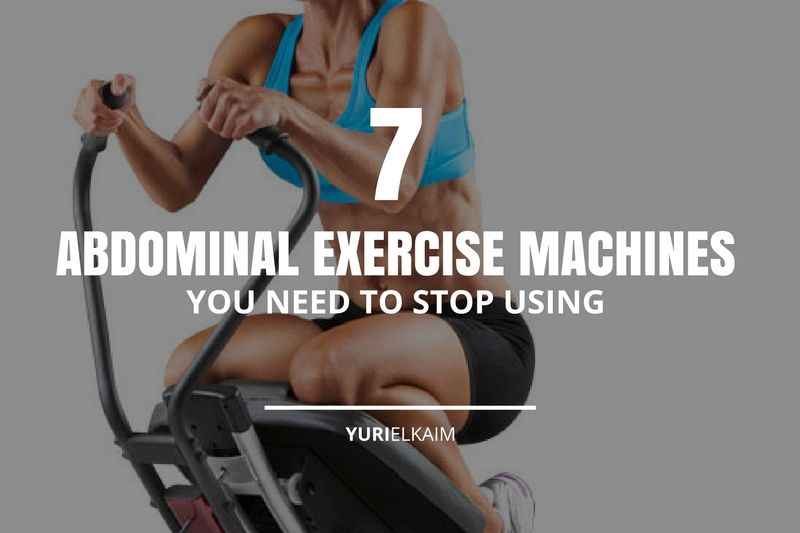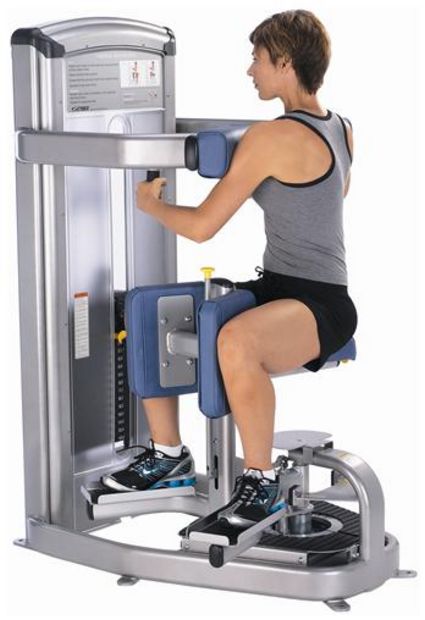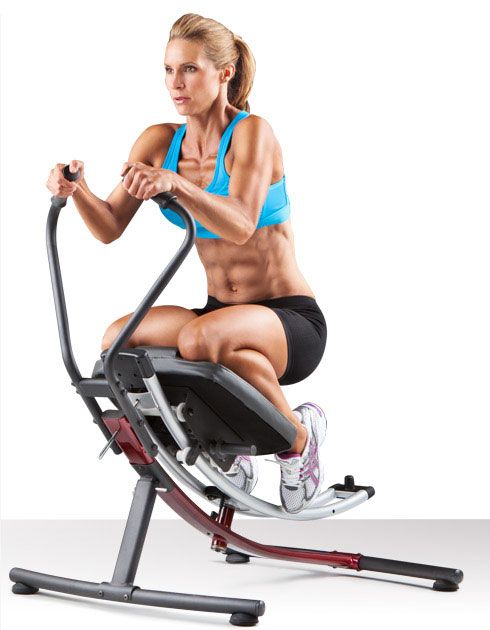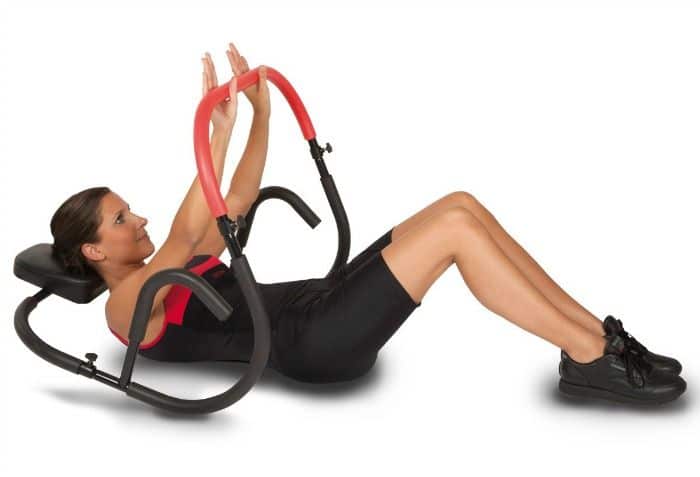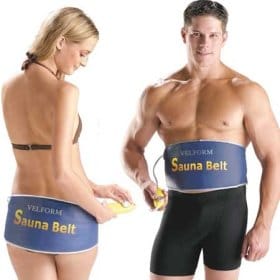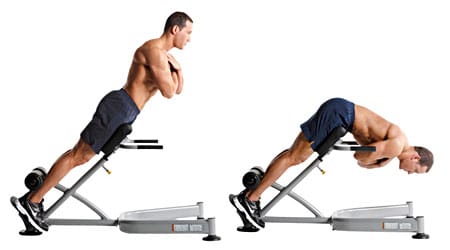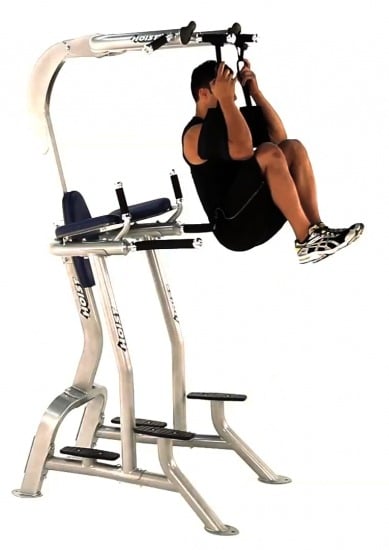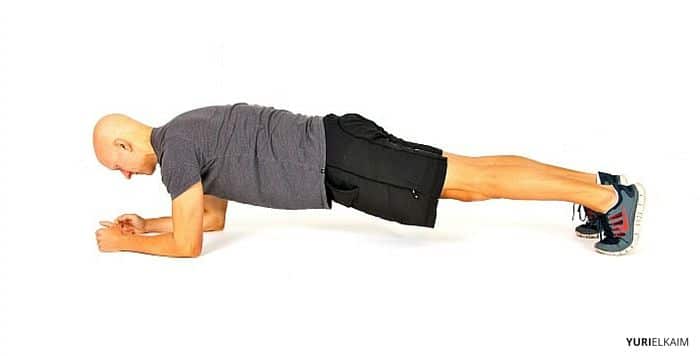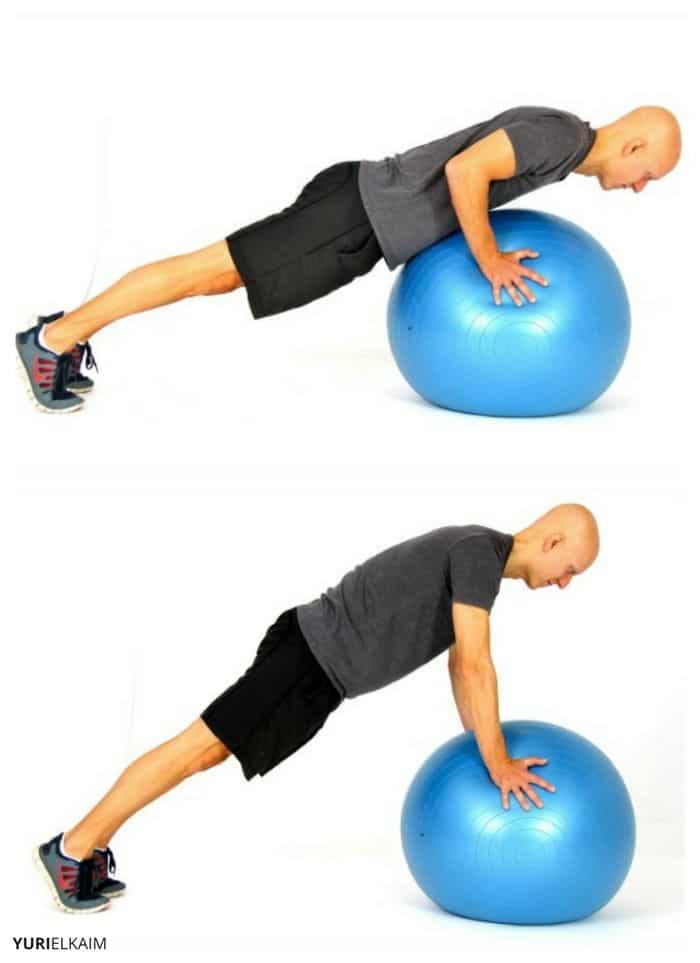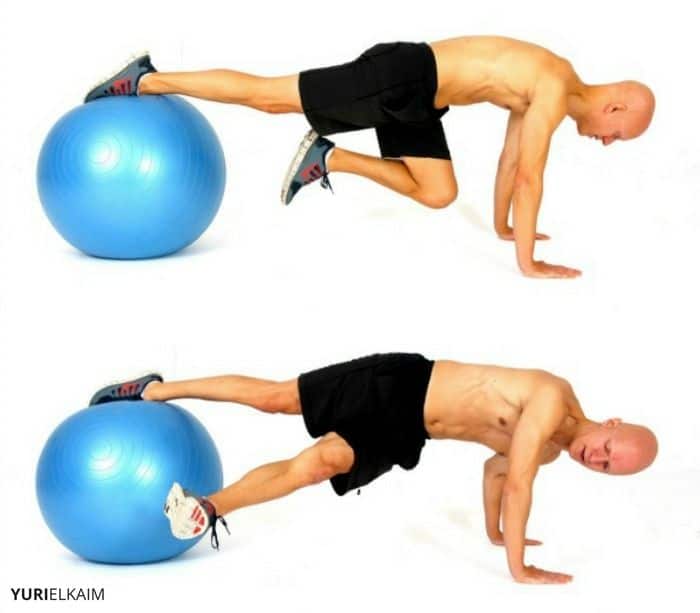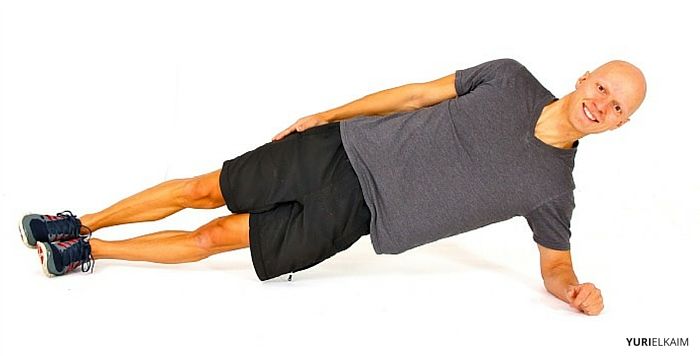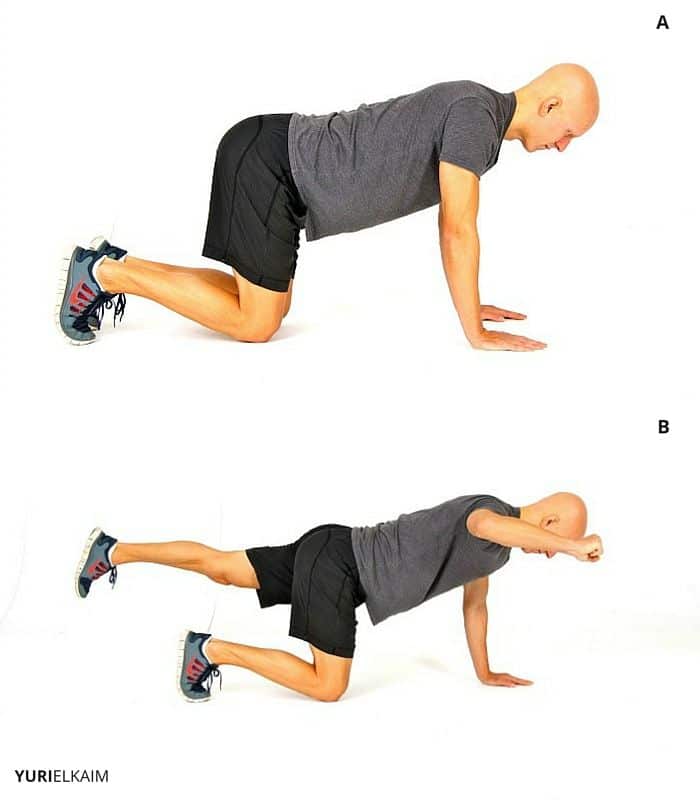In this article
We are all familiar with the “effortless abs” achieved by infomercial models. Usually pictured crunching away on the latest trendy abdominal exercise machine, their encouraging gorgeous smiles and ripped cores often have us whipping out our credit cards on the spot. Or, maybe we try to mimic them using machines at the gym.
They promise visible abs through continued use, while studies show that no amount of crunches, sit-ups, or unnatural twists will “burn” belly fat (1). To help save your back and help you get the abs you want, I’ve put together this list of abdominal exercise machines that are the worst offenders, along with some of the best exercises you can do to strengthen your abs.
7 Worst Abdominal Exercise Machines
1. Incline Sit-Ups
Incline sit-ups are one of the most deceptive of ab machine workouts, not only because they tend to look extremely effective (like an enhanced super-crunch), but also take quite a bit of effort, which makes many believe they’ve gotten an effective ab workout. Unfortunately, the burn induced by incline sit-ups is concentrated in the hip flexors and is especially taxing on their connection point to the upper legs.
Indeed, with the considerable potential risk of tearing one of these crucial flexor muscles, the situation becomes even more severe when we take into account the substantial load that gravity inevitably places on our lower backs. The sheer pressure of this gravitational force can alone suffice to set up the conditions conducive to a potentially debilitating back injury.
2. Seated Spinal Twist Machine
Twisting to “engage the obliques” is a practice that has been around since the advent of ab exercises. Ironically, the twisting motion of these moves – especially by machines such as the seated spinal twist machine –is one of the worst movements for the lumbar spine, which acts as a body stabilizer and is not designed for excessive and unnatural twisting, especially when loaded with weights.
3. Ab Glider
The Ab Glider is reminiscent of the seated spinal twist machine, which causes the spine and discs to swivel while rocking from side to side. Aside from the dangers of this unnatural twisting, most of the tension is pushed onto the hip flexors to drag the torso along (even while facing forward), while the rest is in the arms to hold on to the handles of the machine.
A crucial point to highlight is that back in 2014, the marketers of the prominent fitness product, Pro-Form Ab Glider, faced severe repercussions. They ended up paying a hefty sum of $3 million in civil penalties for their “deceptive weight-loss claims”. This incident emphasizes the imperative need for genuine and honest marketing in the fitness industry (2).
4. Ab Roller
The Ab Roller is another piece of equipment millions of viewers of infomercials have (regrettably) been coerced into buying. It’s tempting to defend the theory behind the contraption since many of us have experienced neck and upper back pain while doing crunches. The Ab Roller’s manufacturer claims the machine’s head support and arms cradle take the pressure off those body parts.
Unfortunately, the Ab Roller intensifies the inefficacy of an already ineffective Ab exercise – the crunch. It incorporates a support system that merely allows you to rock back and forth, primarily utilizing your arms. However, this mechanism, far from being beneficial, results in added strain on your hip flexors, thus possibly exacerbating potential injuries (3).
5. Sauna Belt
A typical “quick weight loss” tactic, the sauna belt claims to trim abdominal fat through enhanced sweating. Despite the benefits of perspiration, such as detoxification and better circulation, using a belt won’t yield abs. Given that spot training is a myth, the notion of localized fat melting by heat is unfounded. Importantly, no scientific evidence supports the sauna belt’s effectiveness.
6. Roman Chair Hyperextension (Back Extensions)
The back extension is usually performed to work the low back (which is actually the back of your abs) or the rear “love handles,” along with the hamstrings and glutes. The problem with this exercise is usually in the way it’s performed, by slowly lowering the body down to the ground, legs locked in, then shooting up quickly to achieve a contraction in the lower back muscles.
This is essentially a disc injury in the making. The potential for the discs to slip due to the fast-paced motion is a real concern. Additionally, there’s a glaring lack of stability in this approach – a crucial aspect that forms the bedrock of all core strength. It’s important to mention that regardless of the amount of crunching, whether standard or reverse, it won’t result in the elimination of stubborn love handles.
7. Vertical/Hanging Knee Raise
The hanging knee raise is another exercise that not only puts extreme stress on the hip flexors but also doesn’t even work the full range of the abdominals. It is only slightly more effective when the pelvis is able to tip forward to aid in lifting the legs, but most of us aren’t strong enough to do this and end up causing even more strain on our hip flexors.
Ab Exercises to Do Instead
When it comes to exercise, the most complicated is usually the least effective in terms of results. A rule of thumb regarding abdominal exercises is to create and mimic movements that are natural to the body. Some call these “functional” movements. The goal is to avoid contorting the body into unnatural positions while working muscles as they were meant to be worked: together, not in isolation.
So how do we do this? By keeping it simple and using mostly bodyweight exercises (there are some exceptions, like the Pallof press, below) that work our core as it was designed to work: as a stabilizer.
1. Planks
Planks are considered one of the best ab exercises, as nearly every inch of the abdominals is being activated, along with the entire front side of the body. In the plank position, we’re building and strengthening the deep core muscles of the transverse abdominis and the internal abdominal obliques, which wrap around our entire core and lay the foundation for our “six-pack” muscles.
The Planks are also excellent for relieving back pain (unlike most machine exercises, which are liable to cause it) by strengthening the actual core – our stabilizer muscles – which takes the pressure off the lower back (4).
2. Stability Ball Push-Ups
Stability ball push-ups are a challenging exercise that has the benefits of a plank (activating those internal abdominal muscles that strengthen the entire core) while also working the arms and upper back. The reason they are so effective is due to the unstable nature of the ball you’re pushing against, which requires the abs (especially the obliques) to work extra hard to maintain balance.
3. Stability Ball Grasshopper
The stability ball grasshopper packs a double punch, as the stability muscles are engaged due to your feet being on the unstable ball, the rectus abdominis (six-pack) muscles are contracting, and the upper body is working isometrically. Be sure to keep your spine straight (don’t let it sag), with your abs pulled in and contracting throughout the exercise.
4. Renegade Rows
The renegade row adds upper body work to the plank, making it harder. By keeping your body in a straight line in the plank position, with one hand rowing a dumbbell to your ribcage, you not only work your arms while activating the stability muscles of the core but also work the upper back and cause the oblique stabilizers to work even harder to balance while your rowing hand is off the ground.
5. Side Planks
Side planks prioritize the internal core and external oblique muscles, simultaneously engaging the arms and outer thighs in an isometric manner. This results in a tightening effect of the obliques around the body often referred to as the “corset” effect. Such engagement contributes to achieving a well-defined and streamlined waistline.
6. The Pallof Press
The Pallof press is one of the few abdominal machine exercises that is extremely effective. Its effectiveness is due to the resisting of spinal movement (which engages the stabilizer muscles in a similar fashion to the plank) while moving a cable weight connected to a tower in front of the body. Here are abs resist twisting as the weighted cable tries to pull the body to the side, which engages the obliques.
7. Upright Bird Dog
The upright bird dog also involves resisting rotation as you place your hands behind you on a stable surface (such as a bench) with your feet in front of you, as if you were preparing for tricep dips. By then lifting one arm in front of you, along with the opposite leg, you create core engagement to maintain your balance, while also isometrically working the glutes and backside of the body.
HIIT Your Workouts for Visible Abs
While staying away from ineffective abdominal machine exercises and doing functional core exercises instead will strengthen and build your abs, they won’t sculpt away excess fat around your middle. So if you want visible abs, you have to add in another layer of workout (along with a sensible diet, of course). That means integrating fat-burning cardio into your weekly routine.
Luckily, planks and plank variations create a higher metabolic output (i.e., more fat burn) than isolated machine exercises, due to the fact they use more muscles. However, one of the best ways to reveal a shredded core is through HIIT (high-intensity interval training), which involves alternating bouts of intense work with short intervals of rest. It is proven to be one of the best workouts to burn fat, even though the workouts are relatively short (5).
Safety Precautions to Take
- Prioritize proper form and technique for each exercise to avoid strain or injury.
- Begin with a suitable warm-up to prepare your muscles for the exercises.
- Progress gradually by starting with easier variations and increasing intensity over time.
- Listen to your body and modify or stop any exercise that causes pain or discomfort.
- Engage your core muscles throughout the movements to maintain stability and protect your back.
- Use a stable surface or equipment, such as a stable ball, that is appropriate for your fitness level.
- Maintain a neutral spine position and avoid excessive twisting or bending during exercises.
- Breathe consistently and avoid holding your breath during exercises.
- Stay hydrated throughout your workout to prevent dehydration and fatigue.
- If you have any pre-existing medical conditions or injuries, consult with a healthcare professional before attempting new exercises.
- Rest and recover between workouts to prevent overuse injuries.
- Pay attention to your body’s limitations and avoid pushing beyond your capabilities.
- Consider seeking guidance from a qualified fitness professional to ensure the proper execution of exercises.
- If you experience any unusual symptoms or persistent pain, seek medical advice promptly.
- Listen to your body and adapt exercises based on your individual fitness level and abilities.
Save Your Money, Save Your Back
Indeed, simplicity often triumphs, particularly in exercise. Adhering to these core training principles not only saves copious amounts of time and money but also potentially safeguards your hip flexors and lower back. Most importantly, it enables you to witness tangible results spanning from head to toe, bringing your fitness goals into clear view.

